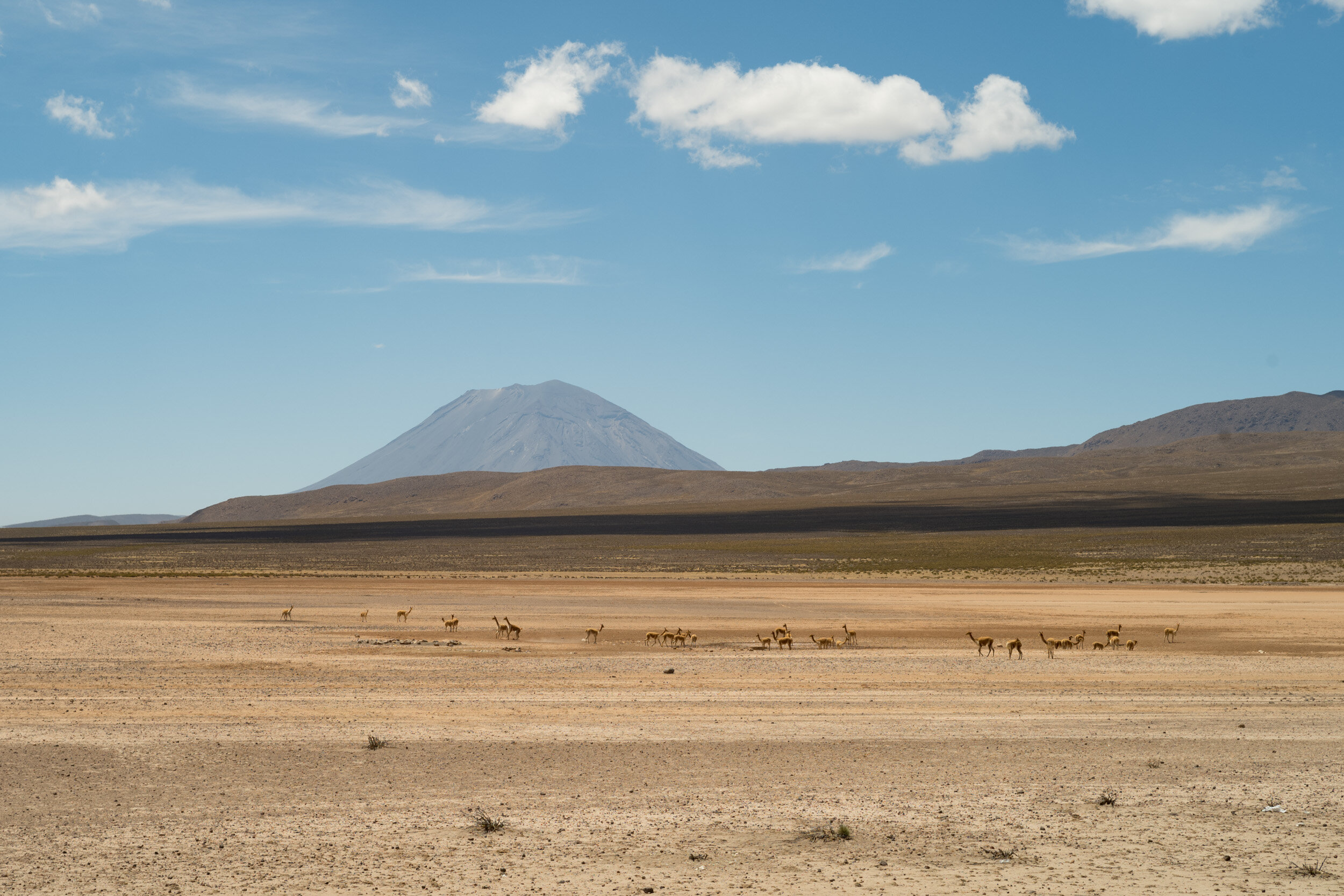Colca Canyon: Peru's Grand Canyon
A herd of wild vicuñas.
My Peru itinerary was planned out according to altitude. I knew that I would be visiting Cusco (11,000’), and hiking the Salkantay Trek (max altitude 15,200’). With altitudes that high, slow acclimatization is essential; you don’t want to arrive in Peru and immediately board a plane to Cusco. I thought that starting my trip in the small city of Arequipa, (8000’) would be a great way to start my Peru trip. As it turned out, I only spent one night in Arequipa before my friend Sally and I jumped on a tour to Colca Canyon (3,500 meters, 11,500 ft). There are several ways you can go about experiencing Colca Canyon; ranging from one day or overnight trips, to multi-day backpacking trips that take you all the way into the canyon and back. Having just arrived in Peru, and having a multi-day trekking trip already planned to Machu Picchu, we opted for the less physically demanding overnight trip, where we would be driven to all of the sights along the way.
Our guide picked us up at 7am the next morning, and less than 24 hours after arriving in Peru I was in a van that was driving the highest paved road in all of South America, topping out at a viewpoint called ‘Mirador de los Andes’ which sits at a suffocating 16,000’ (literally twice as high as Arequipa!). Luckily we didn’t stay that high for long, and that night we slept in the town of Chivay, which is much lower, but still high at 12,000’.
The drive to the Colca Canyon region included a few stops at vistas where we could see steaming volcanoes and the distance, and llamas, alpacas, and wild vicuñas up close. Vicuñas are a smaller relative of llamas and alpacas, and they only live in the wild in Peru at these high altitudes.
We stopped at a roadside cafe for coca leaf tea, the best remedy for altitude related ailments
Llamas and alpacas
The highest point on the road to Colca Canyon, The Mirador de los Andes at 16,000’ elevation.
We spent the night in the town of Chivay
After making several scenic stops along the way, we arrived to the valley and town of Chivay. In the vicinity of Chivay, we stopped off at a few even smaller towns, where we watched local children dancing, vendors selling handicrafts, and women posing for photos with their brightly decorated pet llamas, alpacas, and lambs. The popularity of Colca Canyon brings a lot of visitors through the area, which creates the opportunity for the local townspeople to make an income by catering to the tourists passing through.
Near Chivay, we also visited the Baños Termales La Calera, where there are swimming pools fed with water from underground natural hot springs. The very large hot springs pool was one of the nicest I have visited; with super hot, clean, clear water. As much as I would have liked to relax with a cold beer in the hot springs, I was very concerned about proper altitude acclimatization and avoiding dehydration, so I was avoiding alcohol for much of my trip to Peru.
Local dancers perform for tourists in the town center.
An Andean woman and her pet alpaca pose for photos for tips.
Mirador Cruz del Cóndor
After a restless night of trying to sleep at 12,000’, we got an early start to visit the main attraction; Cruz del Condor within Cañón del Colca. The canyon is one of the deepest in the world at 3,270 meters (10,730 ft). In the mornings, it is possible to see condors in the canyon; they use thermal updrafts to effortlessly soar through the air. Andean condors are an spectacular creature to witness in the wild; they have a massive wingspan of 7–9 ft, and typically live about 60-70 years.
Colca Canyon reminded me less of the Grand Canyon in the USA, and more like the “Grand Canyon” I had visited in Oman a year prior. On this perfectly clear and sunny day, we stood at the canyon’s edge, looking up in the sky hoping to see the condors. After over an hour of waiting, and thinking we’d have to leave without seeing any condors, they finally made their grand appearance.

















